Dear Readers, Bank Exam Race for the Year 2018 is already started, To enrich your preparation here we have providing new series of Practice Questions on Reasoning Ability – Seating Arrangement.Candidates those who are preparing for SBI Clerk 2018 Exams can practice these questions daily and make your preparation effective.
Click “Start Quiz” to attend these Questions and view Solutions
Click here to view Reasoning Questions in Hindi
Directions (1-5) Read the given information carefully and answer the following questions.
There were eight friends A, B, C, D, E, F, G and H sitting in a straight line and all of them likes different countries India, Australia, USA, UK, Japan, Italy, China and Germany but not necessarily in the same order. Four of them were facing north while the remaining four of them were facing south. No two successive friends sit together according to the alphabetical order.
A sits third to the right of the one who likes Japan. One person sits between A and the one who likes USA. The immediate neighbour of the one who likes Japan faces the opposite directions. A sits at one of the end. F sits third to the left of the one who likes India. The one who likes UK sits second to the right of F. The number of person sits between D and the one who likes USA is same as the number of person sits between B and the one who likes China. B and the one who likes Italy faces the same direction. C does not like Germany. B is not an immediate neighbour of G and H. The immediate neighbour of the one who likes Australia faces the same direction. F faces the south. C sits third to the left of the one who likes UK. The one who likes India sits second to the right of the one who likes USA. H does not like Japan. The one who likes Germany sits to the immediate left of G. B does not like USA.
Q1. Who among the following likes Germany?
- A
- B
- C
- D
- E
Q2. What is the position of G with respect to the one who likes India?
- Third to the left
- Third to the right
- Second to the left
- Second to the right
- None of these
Q3. All of the following are in a certain way form a group, which of the following that does not belong to the group?
- A
- G
- C
- E
- D
Q4. Which of the following combination is true?
- A – Australia
- E – USA
- F – Italy
- B – India
- H – China
Q5. How many persons are there between E and the one who likes Italy?
- One
- Two
- Three
- Four
- None
Directions (6-10) Read the given information carefully and answer the following questions.
There were eight friends P, Q, R, S, T, U, V and W sitting around a circular table at equidistant. No two successive friends sit together according to the alphabetical order. All are facing towards the centre. Each of them like different colours such as pink, red, blue, green, black, brown, white and yellowbut not necessarily in the same order. They were of different ages such as 10, 15, 20, 25, 30, 35, 40 and 50 but not necessarily in the same order.
There were two person sits between P and the one who likes red colour. The one who likes blue colour sits opposite to the one who is 25years old. U sits second to the right of R. S is not an immediate neighbour of the one who likes black colour. P’s age was not in perfect square. The one whose age is 25years old sits second to the right of V. The sum of average age of V and the one who likes red colour is equal to the age of P. The one who likes blue colour is an immediate neighbour of Q. W’s age is half of the one who likes yellow colour. V is not an immediate neighbour of both P and the one who likes red colour. Q sits opposite to the one who likes pink colour. W sits third to the left of the one whose age is 30years. The one whose age is 40 years sits opposite to W. The sum of the ages of V and the one who likes brown colour is equal to the age of U. Only one person sits between T and the one who likes pink colour.The one who likes white colour and the one who likes black colour are immediate neighbours.
Q6. Who among the following likes green colour?
- P
- Q
- U
- S
- T
Q7. How many persons are there between the one who likes blue colour and the one who likes red colour?
- One
- Two
- Three
- Four
- None
Q8. Which of the following combination is true?
- T – 40
- P – blue
- W – 20
- Q – black
- None of these
Q9. What is the position of U with respect to T?
- Third to the right
- Third to the left
- Second to the right
- Second to the left
- None of these
Q10. If V is related to 30 and Q is related to 20 then in the same way S is related to?
- 50
- 40
- 25
- 35
- 10
Answers:
Directions (1-5)

A sits third to the right of the one who likes Japan. A sits at one of the end. One person sits between A and the one who likes USA. The immediate neighbour of the one who likes Japan faces the opposite directions. F sits third to the left of the one who likes India. The one who likes UK sits second to the right of F.F faces the south.C sits third to the left of the one who likes UK.The one who likes India sits second to the right of the one who likes USA.
CASE 1: F faces the south.

CASE 1(A): The one who likes UK sits second to the right of F.

CASE 2:

CASE 2(A):

The number of person sits between D and the one who likes USA is same as the number of person sits between B and the one who likes China. B and the one who likes Italy face the same direction. C does not like Germany. B is not an immediate neighbour of G and H. The immediate neighbour of the one who likes Australia faces the same direction.H does not like Japan. The one who likes Germany sits to the immediate left of G. B does not like USA.
CASE 2:The one who likes Germany sits to the immediate left of G.

CASE 2(A): The immediate neighbour of the one who likes Australia faces the same direction.

CASE 2(B):

1). Answer: (a)
2). Answer: (b)
3). Answer: (d)
4). Answer: (d)
5). Answer: (b)
Directions (6-10)

There were two person sits between P and the one who likes red colour. V is not an immediate neighbour of both P and the one who likes red colour. The one who likes blue colour sits opposite to the one who is 25years old.The one whose age is 25years old sits second to the right of V.P’s age was not in perfect square.The one who likes blue colour is an immediate neighbour of Q.Q sits opposite to the one who likes pink colour.Only one person sits between T and the one who likes pink colour.
Case 1: The one who likes blue colour sits opposite to the one who is 25years old.
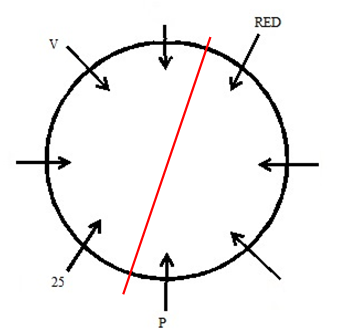
Case 1(a): P’s age was not in perfect square.
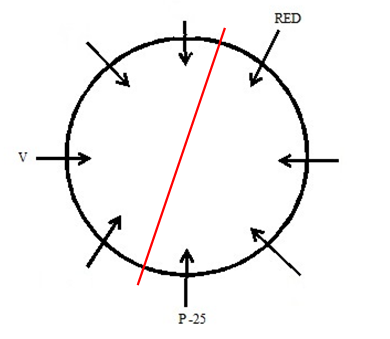
Case 2: The one who likes blue colour is an immediate neighbour of Q.No two successive friends sit together according to the alphabetical order.
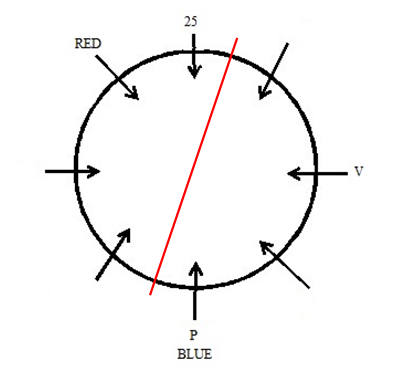
Case 3:Only one person sits between T and the one who likes pink colour.
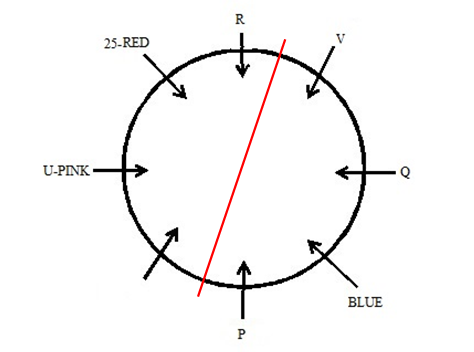
Case 3(a):
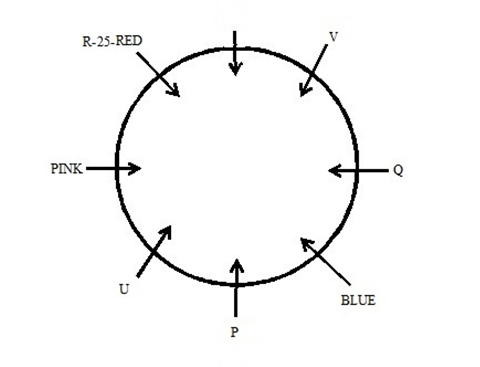
W sits third to the left of the one whose age is 30years.The one whose age is 40 years sits opposite to W.The sum of average age of V and the one who likes red colour is equal to the age of P.W’s age is half of the one who likes yellow colour. The sum of the ages of V and the one who likes brown colour is equal to the age of U.The one who likes white colour and the one who likes black colour are immediate neighbours.S is not an immediate neighbour of the one who likes black colour.
Case 3(a):

6). Answer: (c)
7). Answer: (c)
8). Answer: (e)
9). Answer: (a)
10). Answer: (a)
Daily Practice Test Schedule | Good Luck
| Topic | Daily Publishing Time |
| Daily News Papers & Editorials | 8.00 AM |
| Current Affairs Quiz | 9.00 AM |
| Quantitative Aptitude “20-20” | 11.00 AM |
| Vocabulary (Based on The Hindu) | 12.00 PM |
| General Awareness “20-20” | 1.00 PM |
| English Language “20-20” | 2.00 PM |
| Reasoning Puzzles & Seating | 4.00 PM |
| Daily Current Affairs Updates | 5.00 PM |
| Data Interpretation / Application Sums (Topic Wise) | 6.00 PM |
| Reasoning Ability “20-20” | 7.00 PM |
| English Language (New Pattern Questions) | 8.00 PM |
Click Here for More Practice Puzzles and Seating Arrangement Questions





